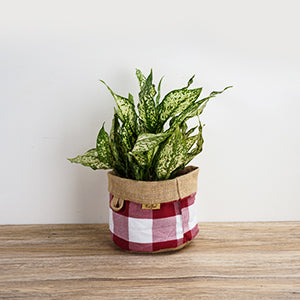Have you ever wondered why, despite your best efforts, some pesky pests still manage to invade your beloved plants? Perhaps you've noticed that no matter how much water or fertilizer you provide, they don't seem to thrive as they should. If this sounds familiar, it might be time for a reality check – are you neglecting an important aspect of gardening maintenance?
We're talking about how to clean garden tools! Those seemingly innocent shovels, rakes, and pruners can harbor hidden enemies like harmful bacteria and fungi that wreak havoc on plant health. But fret not! In this guide, we'll dive into the world of tool sanitation so you can banish those pests for good and watch your garden flourish like never before.
Why Cleaning Garden Tools is Important
Cleaning garden tools is essential for several reasons:
- Removing any remnants of infected plants helps prevent spreading plant diseases and pests.
- Clean tools ensure efficient gardening, as dirt and debris can hinder their functionality. Regular cleaning also prevents the accumulation of rust, which prolongs the lifespan of the tools.
- Well-maintained tools save time and effort during gardening tasks, as sharp and clean tools make the job easier and more effective.
Overall, clean garden tools are crucial for a healthy garden, increased productivity, and the longevity of gardening equipment.
Gather Necessary Supplies for the Cleaning Process
To clean your garden tools effectively, gather the following necessary supplies:
- Soap or Detergent: To create a soapy solution for cleaning.
- Water Source: Access to clean water for rinsing and soaking tools.
- Bucket or Container: To hold the soapy water for soaking the tools.
- Wire Brush or Scraper: For removing caked-on dirt and debris.
- Steel Wool: To tackle stubborn grime and rust.
- Sandpaper: An alternative for rust removal or sharpening.
- Garden Hose or Pressure Washer: For rinsing off the tools thoroughly.
- Lubricating Oil: To prevent rust and lubricate metal parts.
- Rags or Old Towels: For drying the tools and wiping excess oil.
- Disinfectant (optional): If dealing with plant diseases or pests, a disinfectant can be used as well.
--> Visit KiiZYs small garden tools for houseplants page: indoor garden tools
Step-by-Step guide to Cleaning Garden Tools
Cleaning your garden tools is a crucial part of maintenance. Follow this step-by-step guide to ensure your tools stay in excellent condition:
Step 1: Initial Inspection
- Before you begin, examine each tool for dirt, rust, and damage.
- Identify any potential safety hazards, such as broken handles or blades.
Step 2: Removing Dirt and Debris
- Use a wire brush or scraper to remove caked-on dirt and large debris.
- For stubborn grime, employ steel wool or sandpaper.
- Brush off loose dirt and debris to make cleaning easier.
Step 3: Soaking and Scrubbing
- Fill a bucket with warm water and add soap or detergent.
- Submerge your tools in the soapy water, ensuring that the dirtiest parts are covered.
- Allow the tools to soak for 15-30 minutes to loosen remaining dirt.
- Scrub the tools with a brush or sponge to remove any clinging dirt.
- Rinse the tools with clean water to remove soap residue.
Step 4: Removing Rust (if applicable)
- If your tools have rust, use a wire brush or sandpaper to remove it.
- For heavy rust, apply a rust converter or soak the tools in vinegar for a few hours.
- Rinse and dry the tools thoroughly to prevent further rusting.
Step 5: Disinfection (optional)
- If you've been working with diseased plants, consider using a disinfectant to prevent the spread of disease.
- Follow the manufacturer's instructions for the specific disinfectant product.
Step 6: Drying
- Towel dry your tools to prevent rust from forming.
- Allow the tools to air dry completely before storing them.
Step 7: Lubrication
- Apply a light coat of lubricating oil to metal parts (e.g., blades, hinges) to prevent rust and keep them functioning smoothly.
- Wipe off excess oil with a clean rag.
Step 8: Sharpening (if needed)
- Check the sharpness of cutting tools like pruners or shears. If they are dull, sharpen them using the appropriate tool.
- Make sure blades are properly balanced for precise cutting.
Step 9: Maintenance Tips
- Regularly clean and maintain your garden tools after each use.
- Store your tools in a dry and protected area to prevent rust and damage.
- Periodically sharpen and oil tools to keep them in optimal working condition.
- Replace any worn-out parts when necessary.

Benefits of Cleaning Garden Tools Regularly
Cleaning garden tools regularly offer numerous benefits, ensuring they remain effective and durable. Here are some key advantages of regular cleaning:
Preventing the Spread of Diseases:
Regularly cleaning garden tools helps prevent the transfer of diseases and pests from one plant to another. Soil-borne pathogens and pests can adhere to tools, potentially infecting healthy plants during use.
Extending Tool Lifespan:
Cleaning garden tools, especially metal ones, that remove moisture and debris that can lead to rust and corrosion. Rust weakens the metal and can cause tools to break or become ineffective. Cleaning and drying your tools after each use prevents rust and extends their lifespan, saving you money in the long run.
Improving Tool Performance:
Clean tools function more efficiently. Removing dirt and grime ensures that cutting edges remain sharp, like those on pruners and shears. Sharp tools make cleaner cuts, promoting plant health by minimizing damage.
Saving Time and Effort:
Clean tools are easier to work with. Removing soil and debris makes tools lighter and more manageable. You'll spend less time struggling with dirty, inefficient tools and more time working on your garden tasks.
Promoting Safety:
Clean tools are safer to use. Removing dirt and debris reduces the risk of slipping or losing control while using the tools. Additionally, well-maintained tools are less likely to malfunction or break during use, reducing the risk of accidents and injuries.
Final Thoughts
In conclusion, cleaning garden tools is an essential task that should be considered. Regularly cleaning and maintaining your tools can extend their lifespan and ensure optimal performance. Remove dirt or debris from the tools, sanitize them with a household disinfectant, and oil the moving parts to prevent rusting. Storing your tools properly in a dry and well-ventilated area will further protect them from damage. So take a few extra minutes after each use to clean your garden tools – your plants will thank you!
--> Check out KiiZYs reversible planters at Amazon: indoor gardening

FAQs
How often should I clean my garden tools?
Ideally, you should clean your garden tools after each use. However, a thorough cleaning at least once a month is recommended.
how to clean rusty garden tools
To clean rusty garden tools, use a wire brush or steel wool to remove rust, then apply a lubricant like oil or a rust converter.
Is it necessary to lubricate my garden tool handles?
Lubricating wooden handles with linseed oil or mineral spirits helps prevent cracking and keeps them in good condition. Metal parts may require light oiling as well.
Check out KiiZYs' garden products at Amazon Store: indoor garden tools and planters

